What was that? With my ears trained on the hedge, I struggled to listen through my helmet. Cuckoo. Yes! The sound of spring. The sound of Switzerland. Yeah, sort of. The cuckoo clock was actually invented in Germany. But since I wasn’t actually in Switzerland, it seemed appropriate.
Suisse Normande – Norman Switzerland – lies between the departments of Calvados and Orne and is a region of deep forests and river-carved gorges on the ancient Armorican massif. About 500 million years ago, this area consisted of mountains almost 5,000 meters high. Today the peaks are much smaller: the highest, Mont Pinçon, measures only 362 meters. But from the 19th century onwards the atmosphere of the place began to draw Swiss comparisons. Or maybe it was just the fact that it makes really good cheese?
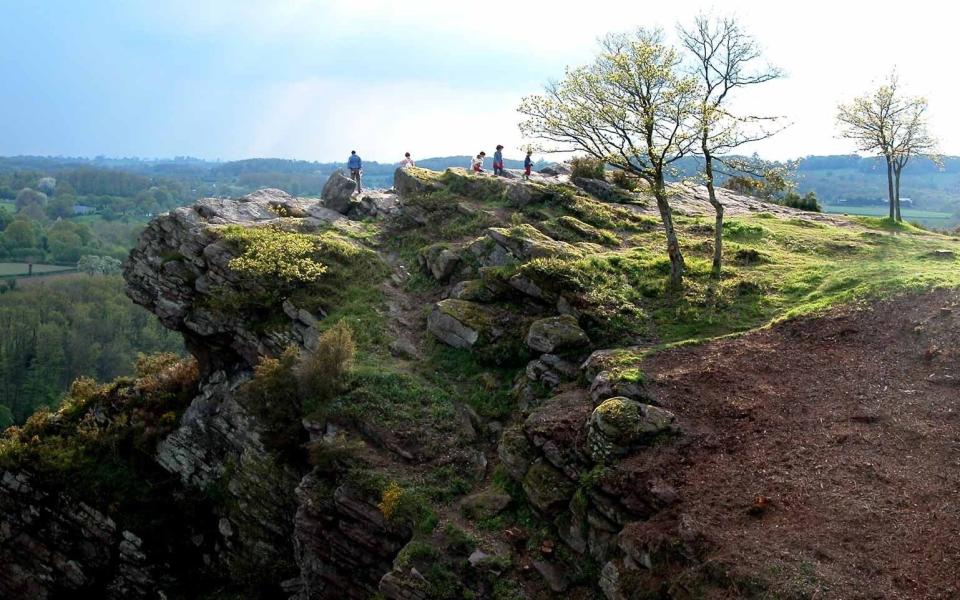
I would come and find out. And to see if Suisse Normande was also a good price. “Dupe destinations” – cheaper, less crowded alternatives to similar places – are said to be a big trend for 2024, and according to Expatistan.com, the cost of living in France is 40 percent lower than in Switzerland.
My husband and I sailed overnight from Portsmouth to start in Ouistreham. We rented e-bikes to better tackle the ‘Swiss’ hills, and planned to follow the Vélo Francette, a cycle path that runs from the English Channel port to the heart of Suisse Normande along traffic-free paths and quiet back roads. After following the Caen canal and passing through the city itself, the Francette becomes a green avenue, using the track bed of the abandoned Caen-Flers railway line, along the River Orne. Here we flew through tunnels and past redundant stations, the valley becoming more and more dramatic as we progressed.
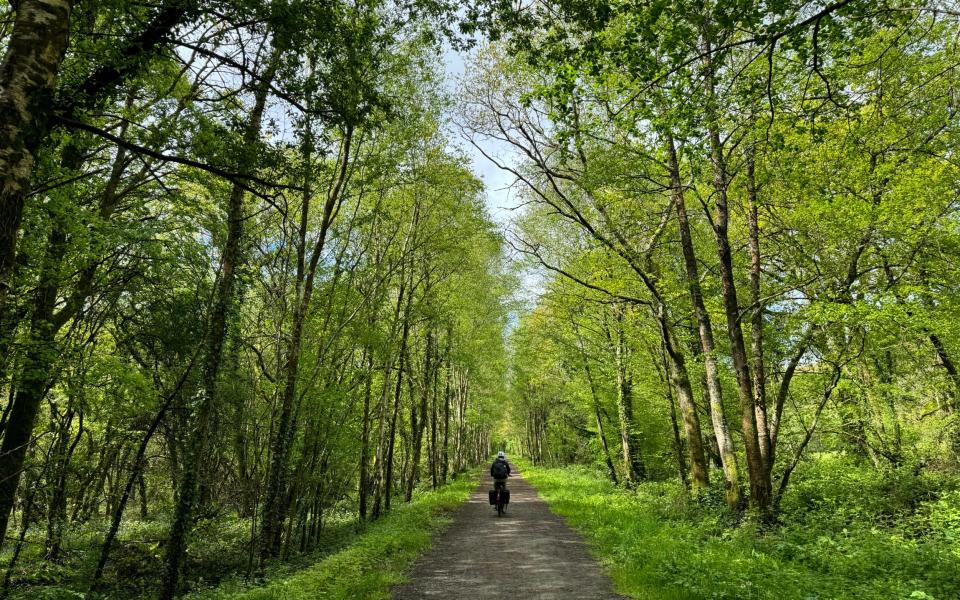

About 65 kilometers south of Caen, surrounded by a river meander and a rocky escarpment, Clécy is considered the capital of Suisse Normande. Like the Swiss Alps, the village became popular in the mid-19th century, when tourists and artists were attracted by the new railway line and impressed by the landscape. But Clécy is also an adventure center. Walking, cycling, climbing, canoeing, paragliding – it’s all possible here.
When we deviated from the cycle path to visit it, we decided, in the spirit of semi-alpinism, to try the via ferrata of Clécy. A 250-metre long track of metal rungs and bridges runs over the rugged sandstone of the Rochers de la Cambronnerie. It was rated ‘easy’ and kids were harnessed when we handed over our €16.50 (£14), so there was no chance of backing out with an ego intact. After a short briefing we set off.
It was both terrifying and exhilarating (mostly terrifying), climbing up the cliffs without a guide, cutting and cutting the wires, 70 meters above the ground. At one point I slipped over a crack on a cord while holding a wire above. As I looked at the view – the winding Orne, the lush hills – both cables trembled. I didn’t know if it was because of the physics or my fear. But I felt quite triumphant once I reached the top, as if I had conquered my own mini Matterhorn. The cable car descent, next to the striking 1860s viaduct, was a relative breeze.
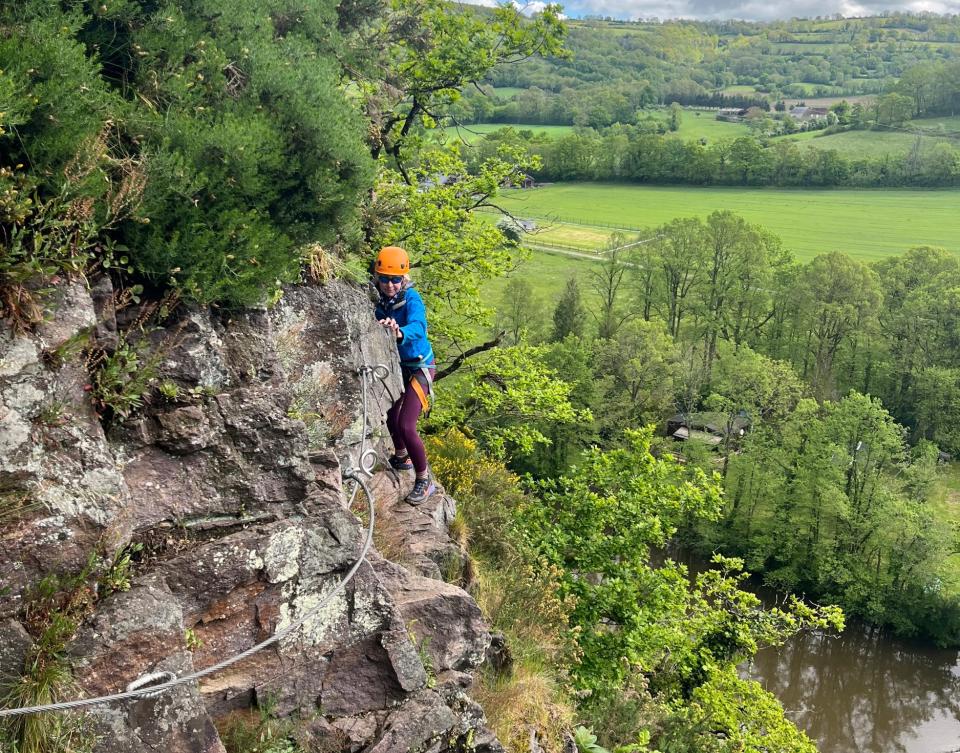

To continue cycling from Clécy, we drove over that viaduct. There was a man preparing to rappel down it. Good luck to him. Pedaling was much more relaxing. We soon found ourselves on country lanes, passing signs for cidreries and creperies. In the village of Pont-d’Ouilly we headed to L’Épicerie du Coing, which had a range of local produce on sale, from organic vegetables and cheese to pots of interesting French things; With nerves still ringing from the via ferrata, we stocked up on hoppy blonde Suisse Normande beers from local microbrewery La Lie.
It wasn’t much further to Camping de la Rouvre, our cheap accommodation for the night. Céline Lelièvre, born in Caen, has been managing this peaceful, green campsite next to the Rouvre River since 2017 – before that she didn’t know this area existed. “When I was a child we went hiking in the Alps, never here,” she told me. “Many people, even in Caen, don’t know this part. But when they arrive, they say: there is something special here.”
Our version of a Swiss chalet was Céline’s Chalet Campagne, a quirky, cozy wood and canvas hut, with a large terrace on which we could drink our beers. We could have cooked in the small kitchen, but instead went to Café de Caillou, a cool little bistro on the 118-meter rock of Roche d’Oëtre. Mine filet de boeuf, from cows grazing within a 300-meter radius, was juicy and delicious. But most of all it was about the view, seen as the classic panorama of Suisse Normande: a glowing green set of gorges that looked less Swiss, a bigger bowl of broccoli.
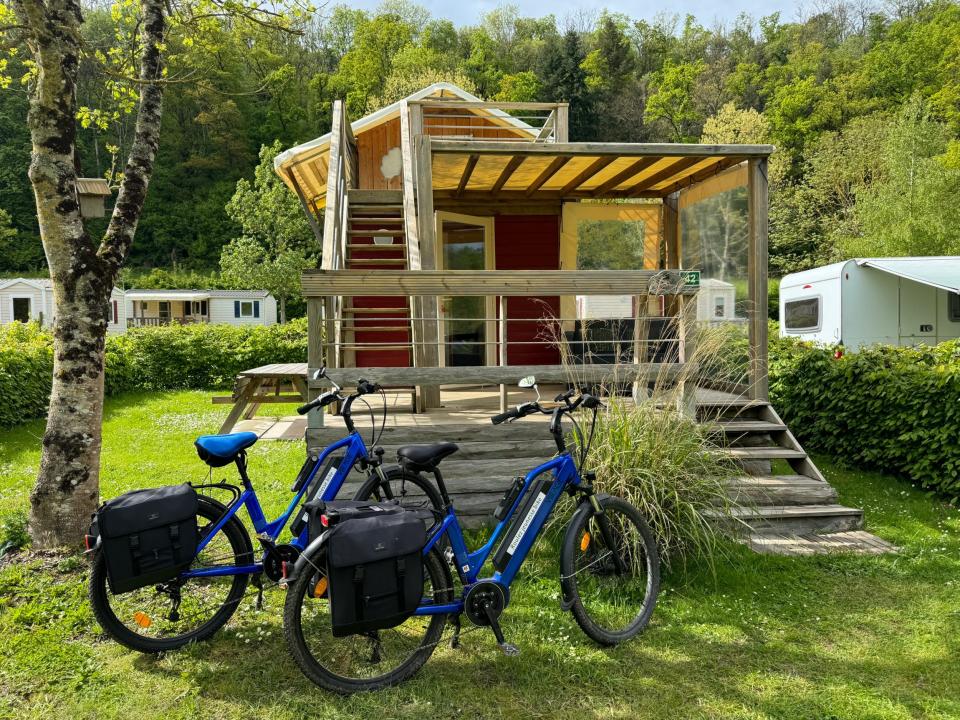

The next morning it was lovely, low mist turning to sunny blue as we ate our pastries – fuel for the waves ahead, along quiet streets lined with wildflowers and trees, to La Carneille. There was a castle here until the English sacked it in 1353, during the Hundred Years’ War. We parked at the old butter market which is now the center of the village and went to the shop for some saucisson. Since there was already bread in our suitcases, we needed one more thing.
There was more idyllic greenery ahead as we roughly bypassed historic Flers – we were on a different mission. Although we were now technically just outside Normandy Switzerland, we wanted cheese. A short, rural detour from the Francette to the bocageland (hedgerows) took us to Champ Secret, France’s only dairy producing organic, farm-style, grass-fed camembert of AOP quality. There was no one around, but the store was open. We peeked through the glass into the dairy, ogled the stacked soft yellow wheels, took a camembert from the honesty fridge and put €5 in the piggy bank.
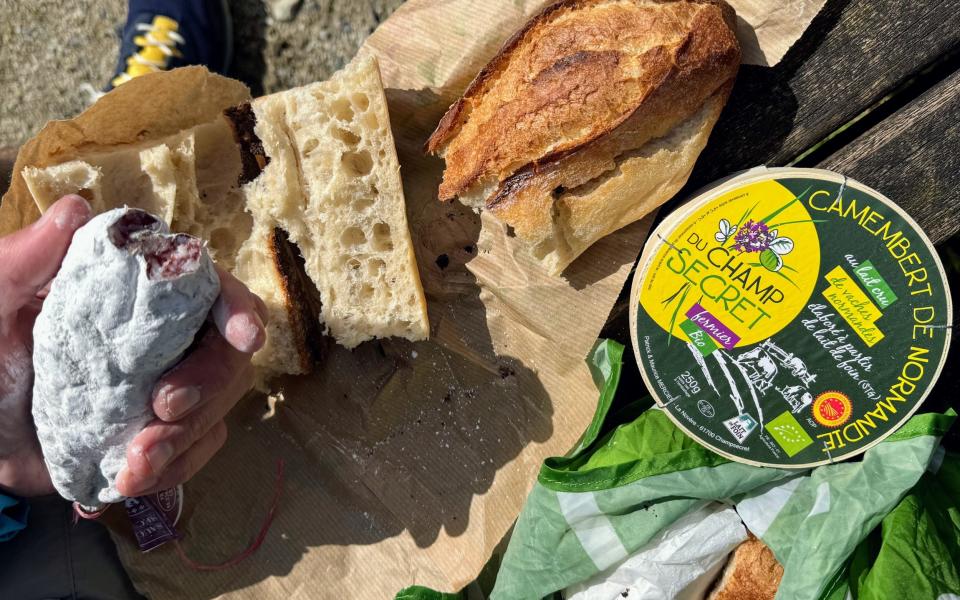

We wanted a nice location to eat this delicious pique-nique, so we continued the cycle path to Domfront. This warren of medieval streets is built atop a chunk of Armorican sandstone, in the shadow of a ruined 11th-century castle that once belonged to Henry Beauclerc, later England’s Henry I. We found a bench within the ramparts and looked out: the far-reaching the view was fit for royalty, as was the incredible cheese. Although this was not Switzerland, it had not cost a king’s ransom.
How to do that
Brittany Ferries (0330 159 7000) offers Portsmouth-Caen/Ouistreham returns from £98 for foot passengers/cyclists. Camping de la Rouvre has pitches from €11, and a tiny house from €80 per night. Roulez JEUnesse offers bike/e-bike rentals from €20/€34 (£17/£29) per day, with lower rates for longer rentals. Clécy via ferrata from €16.50 pp (£14), zipline €25 pp (£21). See orne-normandy-travel.co.uk, calvados-tourisme.co.uk, en.normandie-tourisme.fr and cycling.lavelofrancette.com.
Five more ‘dupe destinations’
1. Shropshire, England – for Switzerland
There are several places called “Little Switzerland”. Church Stretton may be one of the most rarefied, but the surrounding Shropshire Hills are still a great place to walk, and a pint in the Kings Arms (kingsarmschurchstretton.co.uk) doesn’t exactly cost Swiss prices.
2. Navarra, Spain – for Arizona, USA
The semi-desert of Bardenas Reales looks more like the Wild West than northern Spain. This natural park, the UNESCO Biosphere Reserve and Game of Thrones The film location has red rock plateaus, steep, deep valleys and a network of hiking and biking trails.
3. Manchester, England – for New York, USA
Manchester – especially the pre-war Northern Quarter – has doubled for the Big Apple on screen. It also has a similarly vibrant food scene, while the luxurious Hotel Gotham (hotelgotham.co.uk) offers a moody NYC vibe.
4. Valencia, Spain – for Barcelona, Spain
Spain’s third largest city has the soft sandy beaches, vibrant culture and quality food you’ll find in the Catalan capital, but without the overcrowding. The cost of living is also about 25 percent lower in Valencia.
5. Palermo, Italy – for Lisbon, Portugal
According to Expedia’s list of big dupes for 2024, Europe has a new “it” city. After a decade of popularity, Lisbon has become increasingly crowded and dear; Palermo offers Moorish castles, harbor views and the ruggedness of the old town, but has not yet been ‘discovered’.